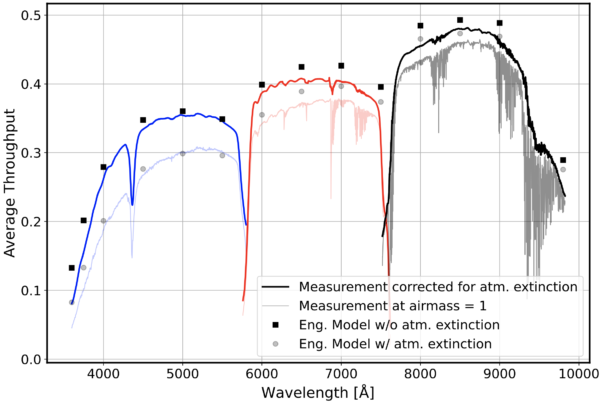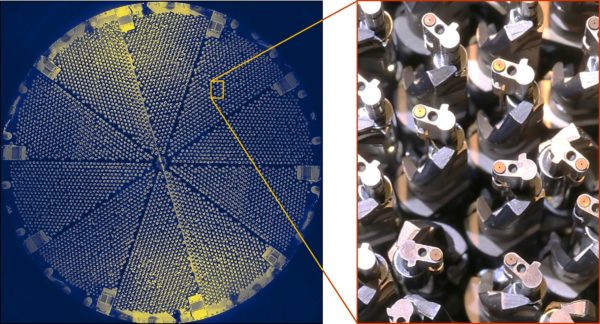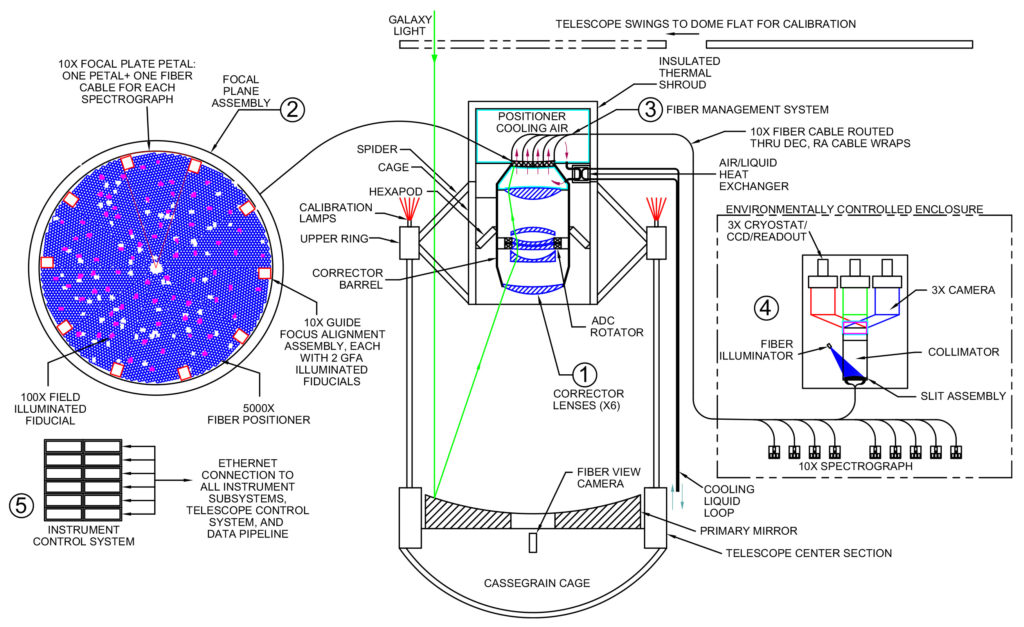DESI is a Stage IV ground-based dark energy experiment that will study baryon acoustic oscillations (BAO) and the growth of structure through redshift-space distortions (RSD) with a wide-area galaxy and quasar redshift survey. DESI is the successor to the successful Stage III BOSS redshift survey and complements imaging surveys such as the Stage III Dark Energy Survey (DES, operating 2013-2018) and the Stage IV Large Synoptic Survey Telescope (LSST, planned start in the early 2020s). DESI is an important component of the DOE Cosmic Frontier program, meeting the need for a wide-field spectroscopic survey identified in the 2011 “Rocky-III” dark energy community planning report. In addition to providing Stage IV constraints on dark energy, DESI will provide new measurements that can constrain theories of modified gravity and inflation, and will provide cutting-edge limits on the sum of neutrino masses.
Overview of the Instrumentation for the Dark Energy Spectroscopic Instrument
This paper describes the instrumentation developed by the DESI collaboration to conduct our survey of 40 million galaxies and quasars in just five years. The major components of the instrument include a new, wide-field (3.2 degree diameter) prime-focus corrector lens system, a focal plane system with 5020 robotic fiber positioners, high-efficiency fiber optics cables, and ten spectrographs that collectively record 5000 spectra per observation in three wavelength channels. All of the hardware development was driven by ambitious requirements on very high efficiency, the capability to obtain an unprecedented number of spectra per observation, and very fast reconfiguration times between observations.

The Robotic Multi-Object Focal Plane System of the Dark Energy Spectroscopic Instrument
This paper describes the system of 5,020 robotic fiber positioners which was installed in 2019 on the Mayall Telescope at Kitt Peak National Observatory (KPNO). In addition to the 5,020 robotic positioners and optical fibers, DESI’s Focal Plane System includes 6 guide cameras, 4 wavefront cameras, 123 fiducial point sources, and a metrology camera mounted at the primary mirror. The system also includes associated structural, thermal, and electrical systems. We discuss the design, construction, quality control, and integration of all these components. We include a summary of the key requirements, the review and acceptance process, on-sky validations of requirements, and lessons learned for future multi-object, fiber-fed spectrographs.

The DESI Fiber View Camera System
This paper describes the design of the fiber view camera (FVC) system, the research and development program preceding the final design, and the tests that have been carried out to demonstrate that the FVC can achieve the required precision.
Science Final Design Report (29.1 MB PDF)
Instrument Final Design Report (123.1 MB PDF)
